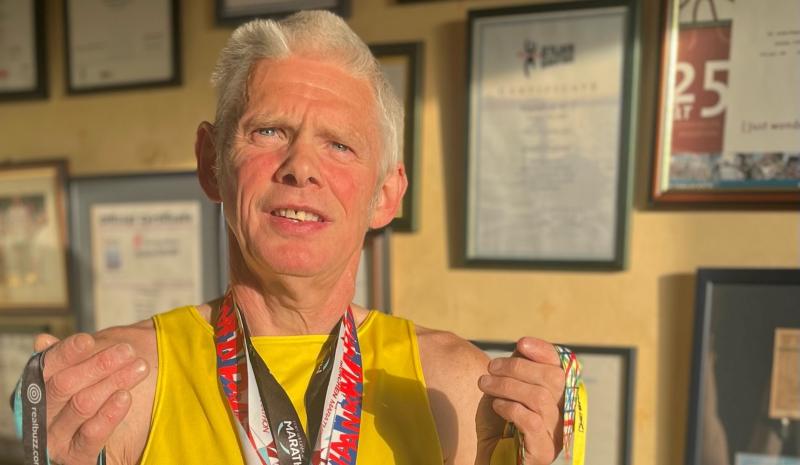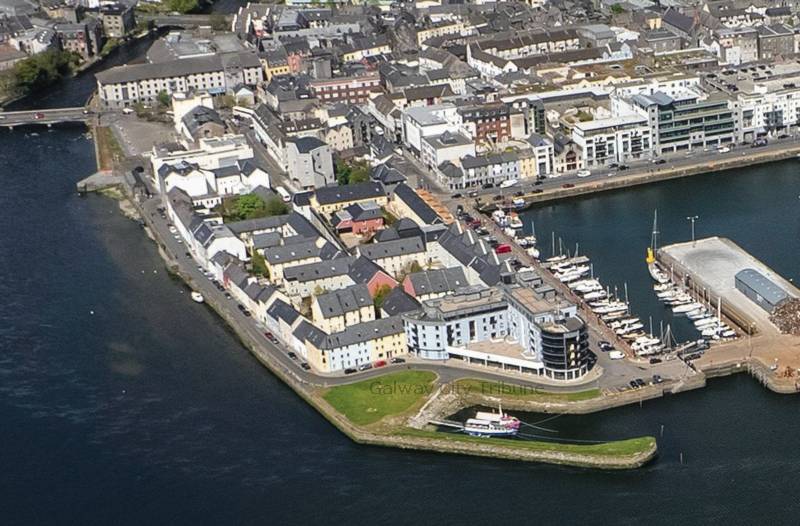Featured
Putting Galway in the picture

Lifestyle – Judy Murphy meets the people who helped Galway to achieve its UNESCO City of Film status
It’s just a year since Galway was designated a UNESCO City of Film, joining a small group which also includes Sydney, Sofia, Bradford and, most recently, Rome.
Since then, Galway Film Centre, which is responsible for nurturing film in Galway City and County, has not been resting on its laurels.
From it base at the former Redemptorist training centre in Cluain Mhuire, Mervue, it is co-ordinating a diverse series of events, from training programmes to screenings, and is drawing up plans to attract more film-makers to Galway in future while supporting the existing local industry.
“From the Docks in Galway City, where the Irish Film Board is based, all the way to TG4 at Baile na hAbhainn there are companies all along the route,” says the Manager of Galway Film Centre Declan Gibbons, who has been appointed Director of Galway UNESCO City of Film.
Some companies, such as Telegael in Spiddal, are major players while others are smaller one- and two-person outfits. But all were involved in writing Galway’s bid to become a UNESCO City of Film, part of a larger UNESCO group known as the Creative Cities Network.
Galway City and County Council were also involved in the bid – the City of Film designation was actually awarded to Galway City, explains Declan, and it’s being administered by Galway Film Centre.
A core requirement to be a member of the Creative Cities Network is that a city uses “creativity as an economic driving force”, says Declan.
This Network consists of 116 different cities worldwide who are deemed by UNESCO to excel in different creative fields – literature, crafts and folk art, gastronomy, music and media arts, and film. Ireland has two member cities – Dublin for literature and most recently Galway for film.
The UNESCO guidelines also require that cities to reach out to vulnerable people, allowing them to express themselves and to become involved creatively.
“It’s about participation, education, production and job creation – the idea that creativity should be one of the key components behind a city’s development,” says Declan.
Being a UNESCO City of film is helping Galway achieve that by increasing its profile, he explains. While the status confers no automatic advantages; “it’s about how you use it and it’s up to you to make the most of it”.
The bid to have Galway named as a UNESCO City of Film was driven by Lelia Doolan, a woman whose career in film and theatre spans many decades. She first discussed the idea with Declan a few years ago and he felt the proposal was worth pursuing. He had known Lelia since the mid 1980s when, as a student at UCG, he was employed to put up posters for Reefer and the Model, a local film which she produced.
“There was a huge amount of work involved” in Galway’s bid, “and there are a lot of strong-minded people in this business, but everyone worked together,” he says of the process.
Participants spent the best part of a year meeting, learning about UNESCO and finding out what was required to ensure Galway’s success.
“Our bid came from both the city and the county because the county is a film and TV hub. And we also included the Irish language because it’s so crucial,” says Declan “That mix might have been one reason we got it.”
He cites Jerry Garcia of the American rock band, the Grateful Dead, who credited their success to the fact that they did something nobody else was doing.
“It wasn’t that they were better, but they were different. Galway is like that; we aren’t making epic Hollywood stuff but culturally, we have a lot.”
‘A lot’ ranges from Robert Flaherty’s 1934 film Man of Aran – one of the most influential documentaries of all time – to the work of John Ford whose parents emigrated to America from Aran and Spiddal in the late 1800s. The winner of four Oscars for directing, his most personal film was The Quiet Man.
Galway also has Ireland’s oldest film society and there’s a strong case to be made for saying that modern Irish cinema began in Connemara in the 1970s, thanks to the work of the pioneering Bob Quinn.
For more, read this week’s Connacht Tribune.
Connacht Tribune
West has lower cancer survival rates than rest

Significant state investment is required to address ‘shocking’ inequalities that leave cancer patients in the West at greater risk of succumbing to the disease.
A meeting of Regional Health Forum West heard that survival rates for breast, lung and colorectal cancers than the national average, and with the most deprived quintile of the population, the West’s residents faced poorer outcomes from a cancer diagnosis.
For breast cancer patients, the five-year survival rate was 80% in the West versus 85% nationally; for lung cancer patients it was 16.7% in the west against a 19.5% national survival rate; and in the West’s colorectal cancer patients, there was a 62.6% survival rate where the national average was 63.1%.
These startling statistics were provided in answer to a question from Ballinasloe-based Cllr Evelyn Parsons (Ind) who said it was yet another reminder that cancer treatment infrastructure in the West was in dire need of improvement.
“The situation is pretty stark. In the Western Regional Health Forum area, we have the highest incidence of deprivation and the highest health inequalities because of that – we have the highest incidences of cancer nationally because of that,” said Cllr Parsons, who is also a general practitioner.
In details provided by CEO of Saolta Health Care Group, which operates Galway’s hospitals, it was stated that a number of factors were impacting on patient outcomes.
Get the full story in this week’s Connacht Tribune, on sale in shops now, or you can download the digital edition from www.connachttribune.ie. You can also download our Connacht Tribune App from Apple’s App Store or get the Android Version from Google Play.
Connacht Tribune
Marathon Man plans to call a halt – but not before he hits 160 races

On the eve of completing his 150th marathon, an odyssey that has taken him across 53 countries, Loughrea’s Marathon Man has announced that he is planning to hang up his running shoes.
But not before Jarlath Fitzgerald completes another ten races, making it 160 marathons on the occasion of his 60th birthday.
“I want to draw the line in 2026. I turn 57 in October and when I reach 60 it’s the finishing line. The longer races are taking it out of me. I did 20 miles there two weeks ago and didn’t feel good. It’s getting harder,” he reveals.
“I’ve arthritis in both hips and there’s wear and tear in the knees.”
We speak as he is about to head out for a run before his shift in Supervalu Loughrea. Despite his physical complaints, he still clocks up 30 miles every second week and generally runs four days a week.
Jarlath receives injections to his left hip to keep the pain at bay while running on the road.
To give his joints a break, during the winter he runs cross country and often does a five-mile trek around Kylebrack Wood.
He is planning on running his 150th marathon in Cork on June 4, where a group of 20 made up of work colleagues, friends and running mates from Loughrea Athletics Club will join him.
Some are doing the 10k, others are doing the half marathon, but all will be there on the finishing line to cheer him on in the phenomenal achievement.
Get the full story in this week’s Connacht Tribune, on sale in shops now, or you can download the digital edition from www.connachttribune.ie. You can also download our Connacht Tribune App from Apple’s App Store or get the Android Version from Google Play.
CITY TRIBUNE
Galway ‘masterplan’ needed to tackle housing and transport crises

From the Galway City Tribune – An impassioned plea for a ‘masterplan’ that would guide Galway City into the future has been made in the Dáil. Galway West TD Catherine Connolly stated this week that there needed to be an all-inclusive approach with “vision and leadership” in order to build a sustainable city.
Deputy Connolly spoke at length at the crisis surrounding traffic and housing in Galway city and said that not all of the blame could be laid at the door of the local authority.
She said that her preference would be the provision of light rail as the main form of public transport, but that this would have to be driven by the government.
“I sat on the local council for 17 years and despaired at all of the solutions going down one road, metaphorically and literally. In 2005 we put Park & Ride into the development plan, but that has not been rolled out. A 2016 transport strategy was outdated at the time and still has not been updated.
“Due to the housing crisis in the city, a task force was set up in 2019. Not a single report or analysis has been published on the cause of the crisis,” added Deputy Connolly.
She then referred to a report from the Land Development Agency (LDA) that identified lands suitable for the provision of housing. But she said that two-thirds of these had significant problems and a large portion was in Merlin Park University Hospital which, she said, would never have housing built on it.
In response, Minister Simon Harris spoke of the continuing job investment in the city and also in higher education, which is his portfolio.
But turning his attention to traffic congestion, he accepted that there were “real issues” when it came to transport, mobility and accessibility around Galway.
“We share the view that we need a Park & Ride facility and I understand there are also Bus Connects plans.
“I also suggest that the City Council reflect on her comments. I am proud to be in a Government that is providing unparalleled levels of investment to local authorities and unparalleled opportunities for local authorities to draw down,” he said.
Then Minister Harris referred to the controversial Galway City Outer Ring Road which he said was “struck down by An Bord Pleanála”, despite a lot of energy having been put into that project.
However, Deputy Connolly picked up on this and pointed out that An Bord Pleanála did not say ‘No’ to the ring road.
“The High Court said ‘No’ to the ring road because An Bord Pleanála acknowledged it failed utterly to consider climate change and our climate change obligations.
“That tells us something about An Bord Pleanála and the management that submitted such a plan.”
In the end, Minister Harris agreed that there needed to be a masterplan for Galway City.
“I suggest it is for the local authority to come up with a vision and then work with the Government to try to fund and implement that.”












